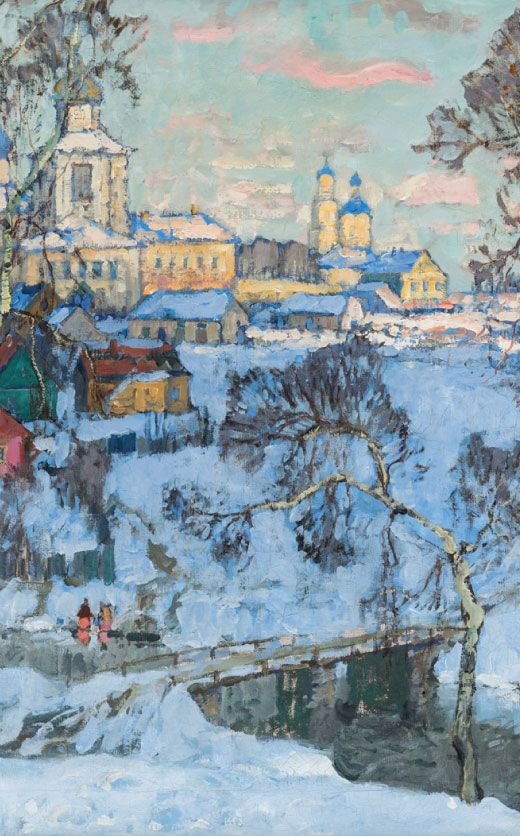Why Provenance Matters in the Art & Antiques Market
When it comes to buying or selling fine art, antiques, or collectibles, one word carries tremendous weight: provenance.
From fine art to decorative items to furniture, provenance, the documented history of ownership, can mean the difference between an overlooked item and a sought-after masterpiece. Why does it matter so much? How can collectors ensure they're making informed decisions?
What Is Provenance?
Provenance is the record of an object's history, documenting its journey from creation to the present day. Provenance describes who owned it, where it was exhibited, when it was sold, and how it moved through time. Think of it as the biography of a piece, offering insight into its journey and often, its value.
A strong provenance will always include a paper trail:
1. Sales receipts or invoices
2. Exhibition records or museum catalogs
3. Mentions in scholarly publications
4. Photos of the piece in situ (in its original place)
5. Signatures, stamps, or stickers from previous sales on the verso (on the back of the painting or object)
6. Letters of authenticity
7. Names of previous (especially notable) owners
Each of these breadcrumbs helps verify an item's authenticity, age, and significance.
The Power of a Good Story
Provenance is not just paperwork; it is part of the item's story. And in the art and antiques world, stories sell.
A chair that once sat in a Vanderbilt estate. A painting purchased directly from the studio of a now-famous artist. These details don't just create emotional resonance; they increase buyer confidence and often boost the final hammer price.
Even for more modest pieces, provenance can attract attention. Items tied to specific periods, regions, or exhibitions help buyers place them in a broader historical and cultural context.
In today's digital auction environment, documentation is more critical than ever. Provenance serves as a protective measure against fraud, forgery, or misattribution. For collectors and investors, it provides confidence in authenticity and a paper trail for insurance or resale.
For sellers, especially those consigning to auction, well-documented provenance can maximize bidding activity and final sale prices.
The following featured lots in the Impressionist & Modernist Art Summer Sale by King Art & Antiques, hosted on Bidsquare, feature items with a strong provenance.
Fernand Léger, Deaux Femmes, Graphite on Paper, 1924, signed LR (Lot 23)
Price: $189,000


Image of stamp on the verso
This graphite on paper by Fernand Léger, featured in the Impressionist & Modernist Art Summer Sale at King Art & Antiques, has an intriguing provenance. It was initially purchased from Gallery Louise Leiris in Paris by Prince Darius Tayarken of London (with a stamp on the verso). In the 1990s, it was acquired from the Tayarken estate by a private dealer in the UK, then moved to a private collection in the UK, and is currently held in a private collection in the United States.
Edgar Degas, French, Dancer, Original Charcoal on Paper, Signed (Lot 15)
Price: $40,000


Image of stamp on the verso
.jpg)
Image of stamp on the verso
Another notable example is a charcoal drawing of a ballet dancer by Edgar Degas. This piece is currently held in a prominent collection in Atlanta. It was purchased from Anthony Lawson, a dealer in London, in 2008, and was previously acquired by Marcus Oliver in December 1935 from the collection of Constantin Redko. Available provenance includes email correspondence and copies of a letter from Konstantin Redko to Marcus Oliver, dated December 1935.
Georges Valmier, Collage, Oil on Board, 1918 signed LR (Lot 2)
Price: $110,000


Image of stamp on the verso
This artwork was acquired from the French Gallery, specifically from the Darius Talyarken Collection in London. It was purchased from the Talyarken Estate around 1990 and is part of a private collection in the Midwest. On the back, there are two collector's stamps: one from Darius Talyarken, London, and another from Darius Taleyarkhan, London, both located at 10 Berkeley Square, London W. The piece is signed by the artist and has a label indicating it is a work by George Valmier titled "Nature Morte," created in 1918. It is listed in the Darius Taleyarkhan collection in London, accompanied by a notary stamp.
Whether you are bidding on a 19th-century sideboard or consigning a modernist painting, provenance matters. It protects your investment, supports authenticity, and adds depth to the collecting experience.
At Bidsquare, our vetted network of trusted auction houses works to present items with transparency, integrity, and as much provenance as possible.
- Inspired by Cape Cod: The Artists Who Paint Its Light, History, and Character
- Modern Masterworks: A Celebration of Midcentury & Contemporary Design
- Inuit Masterworks: Rare Arctic Stone Carvings
- Auction Highlights: Exceptional Fine Art from the Lucille Coleman Collection at Doyle
- Treasures of the East: Highlights from Brunk Auctions' Asian Art Sale
- Pre-Columbian Art & Beyond: Timeless Legacies of the Ancient Americas
- Featured Artist: Frank Stella (1936–2024)
- A Vanderbilt & Whitney Legacy: The Collection of Marylou Whitney & John Hendrickson
- Behind the Curtain: The Tony Walton Collection at Willow Auction House
- Fine Western & American Art: Coeur d’Alene’s November Sale Celebrates the Spirit of the West



 EUR
EUR CAD
CAD AUD
AUD GBP
GBP MXN
MXN HKD
HKD CNY
CNY MYR
MYR SEK
SEK SGD
SGD CHF
CHF THB
THB












